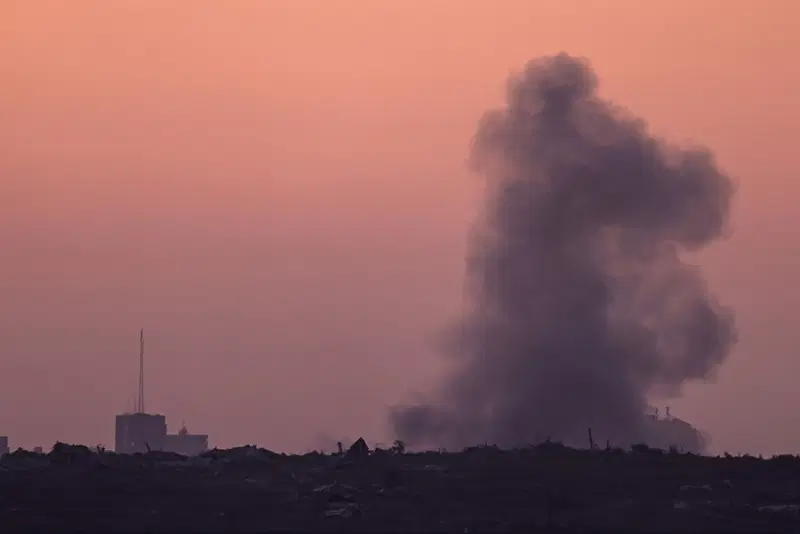Israel intensified its assault on Gaza City and its surrounding areas overnight, residents reported on Thursday, following approval by the defence ministry for an expanded offensive aimed at dismantling the remaining Hamas strongholds in the territory.
The new military plan allows for the mobilization of approximately 60,000 reservists, raising fears that the campaign could exacerbate the already dire humanitarian crisis in Gaza.
“We are not waiting. We have begun the preliminary actions, and already now, IDF (army) troops are holding the outskirts of Gaza City,” the Israeli military stated.
The proposed escalation and the push to seize Gaza City have sparked both international condemnation and domestic criticism.
The call-up of reservists is expected to start in early September, the Israeli military has said.
Residents described a night of unrelenting bombardment. Ahmad al-Shanti told AFP, “The house shakes with us all night long, the sound of explosions, artillery, warplanes, ambulances, and cries for help is killing us. The sound is getting closer, but where would we go?”
Another resident, Amal Abdel-Aal, recounted witnessing heavy strikes a week after being displaced from her home in Gaza City’s Al-Sabra neighbourhood.
“No one in Gaza has slept, not last night, not for a week. The artillery and air strikes in the east never stop. The sky flashes all night long,” she said.
Mahmud Bassal, spokesman for the Gaza civil defence agency, confirmed that overnight air strikes and artillery fire targeted areas northwest and southeast of Gaza City.
The Israeli military later detailed operations across Gaza in recent weeks, claiming the manoeuvres and strikes had “created the conditions” to intensify pressure on Hamas and set the stage for the next phases of the campaign.
As Israel strengthened its control over Gaza City’s outskirts, mediators awaited an official response from Israel regarding a ceasefire proposal recently accepted by Hamas.
– ‘Ball’ in Israel’s court –
Throughout the nearly two-year conflict, Israel and Hamas have engaged in a series of indirect negotiations, resulting in temporary ceasefires that allowed for the release of Israeli hostages in exchange for Palestinian prisoners.
Of the 251 hostages taken during Hamas’s October 2023 assault on southern Israel, 49 remain in Gaza, including 27 that Israel says are dead.
According to sources from Hamas and its ally Islamic Jihad, the latest ceasefire plan calls for the release of 10 hostages and 18 bodies, with remaining captives to be freed in a second phase alongside discussions on a broader settlement.
Qatar and Egypt, supported by the United States, have overseen multiple rounds of shuttle diplomacy. Qatar described the proposal as “almost identical” to an earlier version approved by Israel, while Cairo stated on Monday that “the ball is now in its (Israel’s) court.”
Hamas criticized Israel’s defence ministry approval of the Gaza City offensive, accusing it of showing “blatant disregard” for ceasefire and hostage release efforts.
“Today’s announcement by the terrorist occupation army of the start of an operation against Gaza City and its nearly one million residents and displaced persons… demonstrates… a blatant disregard for the efforts made by the mediators,” the group said in a statement.
The October 2023 Hamas attack on Israel killed 1,219 people, mostly civilians, according to AFP figures based on official sources.
Meanwhile, Israel’s offensive has reportedly claimed at least 62,122 Palestinian lives, predominantly civilians, according to Gaza’s Hamas-run health ministry, whose data the United Nations considers reliable.
Media restrictions and limited access to many areas make independent verification of casualty figures and operational details challenging for AFP.
